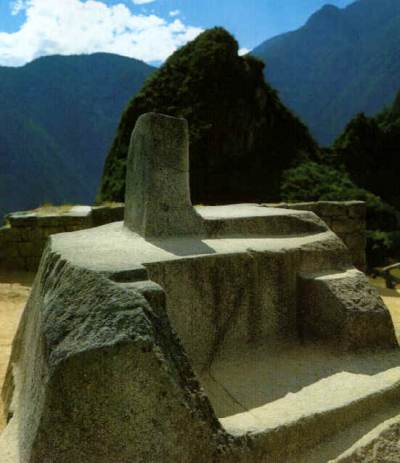
Next -> | Peru1 | Peru2 | Peru3 | Peru4 |
Machu Picchu
Machu Picchu is situated between steep mountains with summits above 5.500m and the always-wild Vilcanota River. The only way to get there was over a narrow footpath constructed by the Incas, the Inca Trail or the Camino del Inca.

The American professor Hiram Bingham searched already some time for the lost city of Vilcabamba. This was the last hiding place of the Incas. On July the 23rd of 1911 he and his team were again deep in the Andes looking for Vilcabamba.
Bingham relied on cryptic indications in an old document about the last free Inca Manco Capac II who escaped from the Spanish after the defeated revolt in Cusco.
In Bingham book "The discovery of Machu Picchu" he wrote:
"Suddenly I was standing in front of the walls of a ruin and houses from the best quality of Inca building art. The walls were difficult to see because the trees and moss ranked partly the stones during centuries. But in the shade of bamboo bushes and climbing plants were the walls visible of white granite blocks chopped in the highest precision. I found brilliant temples, royal houses, a big square and tens of houses. It looked like a dream."
I could find the celebrated 12-angled stone which showed a high technology of Inca in the Church of San Blas.
In
Ollantaytambo,
I could see different expressions of
architectonic art, culture and Inca cosmology. The main attractions are the Ollantaytambo temple, the Inca town, the great pyramid of Pacaritanpu, the
temple of the Condor, the profile of Tunupa, the Cachijata quarry, the fortress
of Pumamarka.